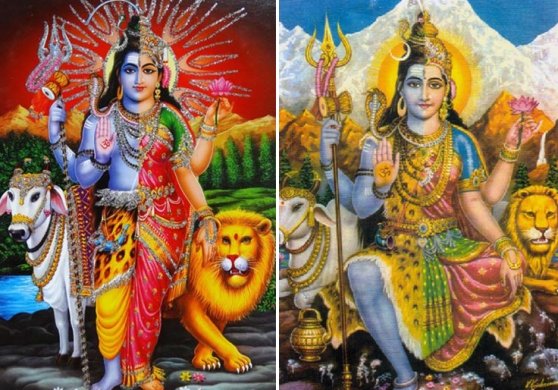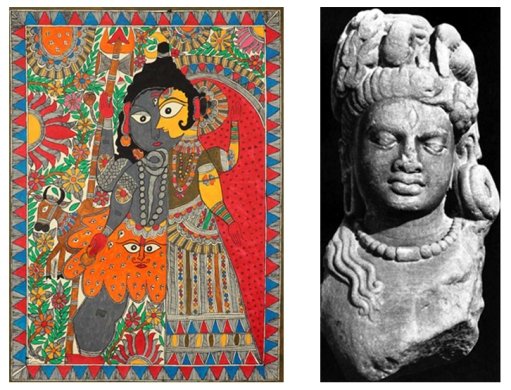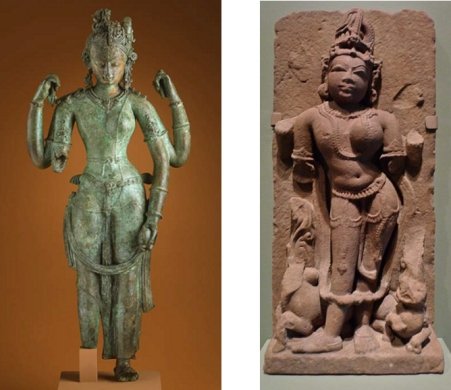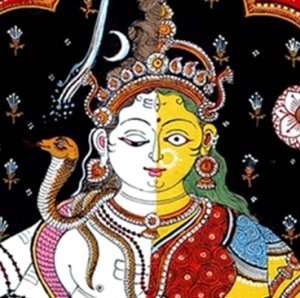
|  |

|  |
Reborn...a modern look at an ancient thought - Shanta Serbjeet Singh e-mail: shanta.serbjeetsingh@gmail.com December 28, 2014 (This keynote paper on transgender was presented by Shanta Serbjeet Singh for the Yogyakarta Conference earlier this month.) Deities who are in some way androgynous or intersex are common in mythologies worldwide due to the associated symbolism of creation and fertility. Depictions vary broadly, but there are several described in search stations on LGBT themes in mythology which fit our modern concerns about transgender or intersex. I plan to talk here at some length about a transgender concept in Indian thought which deals with a god composed of two different people, one male and the other female, who can join together and split apart at will. Avowedly, this has very little in common with a contemporary transgender or intersex individual, who is not always interested in being bipolar in his or her sexual preferences. Nor is he/she interested in being more than only one person. But I feel that consideration of a myth like that of Ardhanarishwara and the various philosophical concepts that have grown around it is valid if only to connect it to modern notions of sexuality. It would give gender studies a new freedom to work on specific terms such as "gender fluidity" or, as exemplified by Ardhanarishvara, "bigender", while at the same time not get into the trap of translating them into anything contemporary or even human at all.  Ardhanarishvara at Khajuraho
So, what is this myth, philosophy, concept and way of looking at the perennially challenging issue of sexuality drawn from Ancient India? Ardhanarishvara, a Sanskrit word, represents two things, one that conveys the abstract, androgynous nature of the human being as well as another that is a representation of this idea in a specific, concrete manner in the form of a particular, identifiable godhead shown always as Shiva and his consort, Parvati (also known as Devi, Shakti and Uma in this icon). As a concept Ardhanarishvara acknowledges the duality that breathes in each of us. This duality that eventually becomes a totality symbols the fact that every human is a sum of parts that condition our response to the world in some ways which can be called "masculine" and some other which are recognized as "feminine." This dual nature of the human species, as portrayed in this ancient mythological concept, is the only acknowledgement, to my knowledge, throughout early philosophical, iconographic and literary texts as well as tangible objects of the cultures of the world, that clearly understand a bipolarity that modern psychology acknowledges freely today.  Hindu thought gives ample evidence of this highly evolved and unique insight into a psychological and philosophical truth which mirrors the human being's inner truth. Thus, at a conceptual and metaphorical plane Ardhanarishvara represents the synthesis of the masculine and feminine energies of the universe known as Purusha and Prakriti in Sanskrit texts and illustrates how Shakti, the female principle of God, is inseparable from (or the same as, according to some interpretations) Shiva, the male principle of God. The union of these principles is exalted as the root and womb of all creation. While the concept of Ardhanarishvara originated in ancient India's Kushan era (30-375 CE) as well as far-away Greek culture simultaneously, its iconography evolved only in the later Kushan period. It was perfected in the Gupta era (320-600 CE). A mid-first century Kushan era stela in the Mathura Museum has a half-male, half female image, alongside three other figures identified with the God Vishnu, the goddess Lakshmi and the god of wealth, Kubera. The male half has a phallus and the hand makes an abhaya or fearless gesture; the female left half holds a mirror and has a rounded breast. This is the earliest representation of Ardhanarishvara that is universally recognized.  An early Kushan Ardhanarishvara head discovered at Rajghat is displayed at the Museum in Mathura. Here the right male half has matted hair with a skull and crescent moon; the left female half has well combed hair decorated with flowers and wears a patra-kundala (earring). The face has a common third eye. A terracotta seal discovered in Vaishali has half-man, half-woman features. Early Kushan images show Ardhanarishvara in a simple two-armed form, but later texts and sculptures depict a more complex iconography. Volumes of commentaries and interpretations in later millennia try to make sense of the metaphysical complexities that have evolved around this simple bipolar truth rooted in human psychology. For instance, Ardhanarishvara is interpreted as an attempt to syncretise the two principal Hindu sects, Shaivism and Shaktism, dedicated to Shiva and the Great Goddess Shakti. As a concrete visualisation, to be seen in stone and metal, wood, textile and paper, this god is always shown split vertically down the middle upon a central axial. It is also seen in classical dance. You will see a distinct image that represents either the harmonious male-female essence of divinity or else the fact that God is genderless and beyond human attributes. While Ardhanarishvara remains a popular iconographic form found in most Shiva temples throughout India, very few temples are dedicated to this deity. Of interest to us is the thesis of some writers, both Indian and American, who have looked at Ardhanarishwara as seen through the prism of modern feministic thought is relevant here. In Indian metaphysical thought, he points out, the male and the female are not seen as exclusive entities, separated into watertight compartments. Early Indian history has been a period of relative equality of sexes and celebration of femininity. However, 1,000 years of Muslim and later British rule changed this position drastically, and women were hidden behind a repressive purdah or veil, and their freedom and rights were curtailed. Later, the participation of many woman leaders of great stature in India's struggle for independence was reflected in the theatre that evolved in post-independent India. If feminism can be described as an aspect of humanism to sensitise both men and women to come out of the orientations resting on exploitative forms of existence, then Ardhanarishvara (the lord who is half woman and half man) is its finest manifestation.  I end with a salutation to your society's efforts to protect the plurality of choice of ordinary people in the matter of sexual preferences. I am aware of your efforts in this direction , some even inspired by the concept of Ardhanishvara.   Shanta Serbjeet Singh, for twenty-five years, columnist, critic and media analyst for The Hindustan Times, The Economic Times and The Times of India, is the recipient of the Lifetime Achievement Award of the Sangeet Natak Akademi and Delhi Govt.'s Sahitya Kala Parishad for her contribution to the field of culture. She just finished her term as Vice Chairman of the SNA, is the founder-secretary of the World Culture Forum and continues as Chair of the UNESCO created NGO APPAN (The Asia-Pacific Performing Arts Network), a position to which she was appointed in 2001. Singh has authored several well-known publications such as 'Indian Dance: The Ultimate Metaphor' (published by Ravi Kumar (Paris), 'The 50th Milestone: A Feminine Critique' (Sterling Publishers, to mark India's fiftieth anniversary of Independence), 'Nanak, The Guru' (Oxford University Press) and 'America and You' (22 editions). Post your comments Pl provide your name and email id along with your comment. All appropriate comments posted with name and email id in the blog will also be featured in the site. |